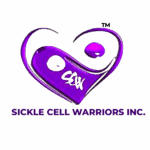 The first bit of news comes from Los Angeles. The NFL Charity Foundation has just awarded USC Saban Institute of the Children’s Hospital with a $100,000 grant to study the cardiovascular system of athletes with sickle cell trait to learn about red blood cell metabolism and it’s consequences for athletes. Researchers at USC will study heart data by body mass index, player position and age, and will also do a comparative study with USC football players, according to the university. This is the first research grant given exclusively to study the relationship between sports and sickle cell carriers. Read more about it HERE and HERE.
The first bit of news comes from Los Angeles. The NFL Charity Foundation has just awarded USC Saban Institute of the Children’s Hospital with a $100,000 grant to study the cardiovascular system of athletes with sickle cell trait to learn about red blood cell metabolism and it’s consequences for athletes. Researchers at USC will study heart data by body mass index, player position and age, and will also do a comparative study with USC football players, according to the university. This is the first research grant given exclusively to study the relationship between sports and sickle cell carriers. Read more about it HERE and HERE.
There is some tragic news coming out of Duke University Hospital. An autopsy conducted on a 30 year old sickle cell warrior–Cheryl Lynn Suber, showed that she died from a toxic overdose of Benadryl and Oxycodone. Her boyfriend asked the nurses to check on her after leaving her room, and she was found to be unresponsive. The attending doctor requested an autopsy, and although an investigation is still taking place, the circumstances are somewhat suspicious. She was found to have a syringe of ‘cloudy’ medicine in her bed….this is just sad and absolutely heart-wrenching. My heart goes out to the family. I encourage all warriors, when you are sick and in the hospital, please don’t use anything else besides what the doctors’ prescribe. I know sometimes we can be in so much pain that we want to alleviate it; but polypharmacy (mixing drugs) is a recipe for disaster. Let us all learn from poor Cheryl and keep her family in our prayers. Read more on this HERE.
On the research tip, biochemists at the University of Texas have announced that they have discovered a new way to identify sickled cells and reduce crises in mice. Patients with sickle cell have high levels of a protein called adenosine. Previous research has shown that an increase in adenosine contributes to priapism. By decreasing levels of a signaling molecule called adenosine, the scientists were able to reduce the deformity and destruction of red blood cells and also reduce injury to vital organs in a transgenic mouse model of sickle cell disease. The next step is to take this research to the next level, and try to reduce adenosine in patients with sickle cell. Read more on this HERE.
And this wraps up your fortnight is sickle cell news and research. Peace!
